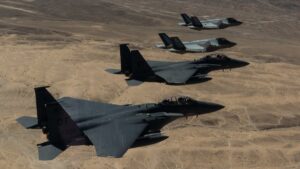
This year, General Electric [GE] plans to deliver a report to the F-35 Joint Program Office (JPO) on how the company could adapt its XA100 engine for the U.S. Marine Corps F-35B and the cost of such an adaptation. The Pentagon’s fiscal 2024 budget may lay out a future path for engines for the Lockheed Martin [LMT] F-35–a course of action that may upgrade the existing Pratt & Whitney [RTX] F135 engines or replace them with more fuel efficient and…














